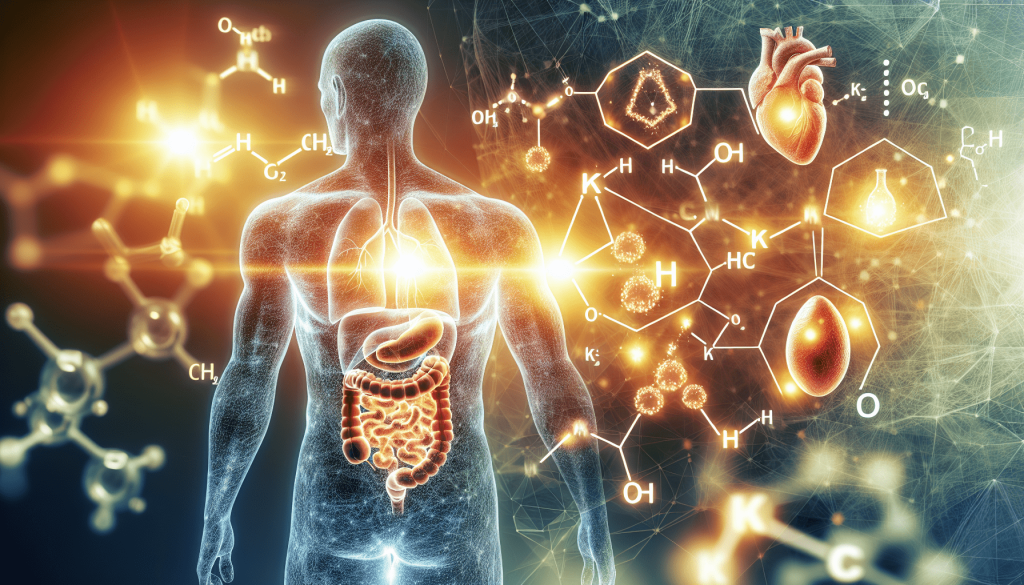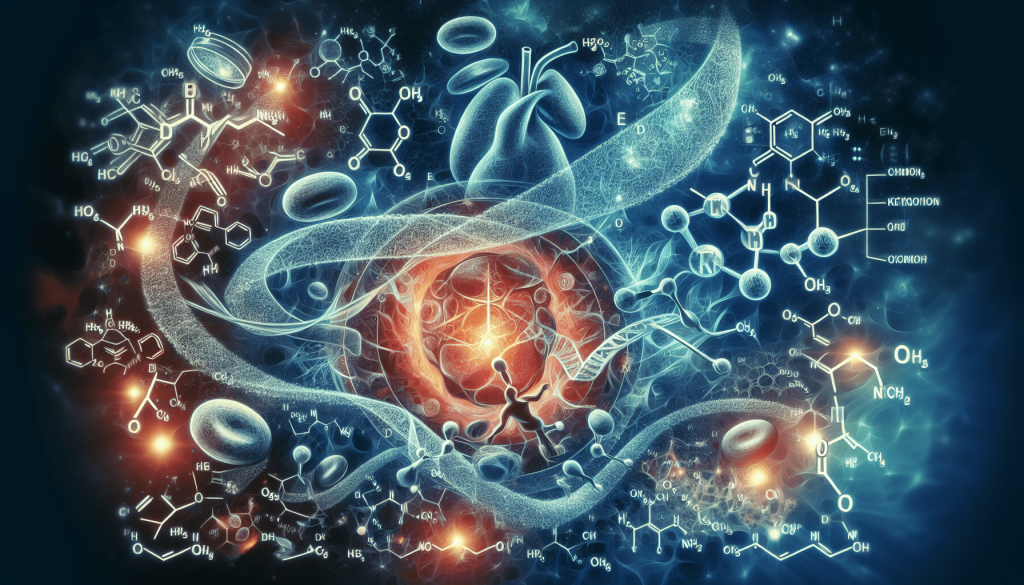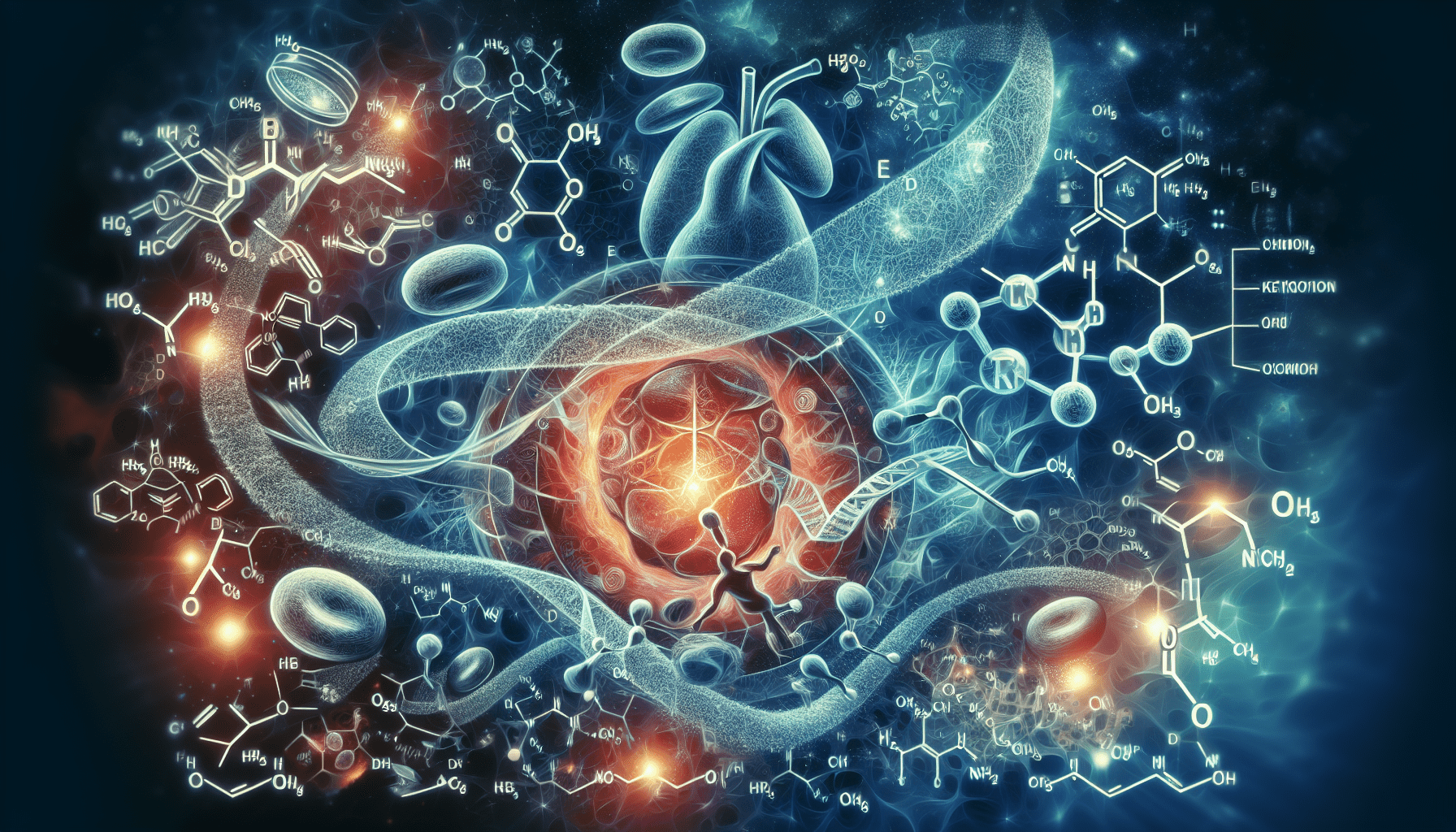Have you ever wondered how your body burns fat? In this article, we delve into the fascinating chemistry of ketosis and explore the science behind fat burning. Ketosis, a natural metabolic process, occurs when your body switches from using carbohydrates as its primary fuel source to using stored fats. By understanding the intricate chemistry involved, you can gain insights into how to optimize your body’s fat-burning potential and potentially achieve your health and wellness goals. So, let’s dive into the world of ketosis and uncover the secrets behind effective fat burning.
What is Ketosis?
Definition
Ketosis is a metabolic state in which your body primarily uses ketones, a byproduct of fat breakdown, as its main source of energy instead of glucose. This occurs when carbohydrate intake is limited, and the body begins to break down fats for fuel.
The role of carbohydrates
Carbohydrates play a crucial role in our body’s energy production. When you consume carbohydrates, they are broken down into glucose, which is then used by the body as a source of fuel. However, when you restrict your carbohydrate intake, your body is forced to look for an alternative fuel source.
The switch to fat burning
In the absence of carbohydrates, your body shifts its energy production from glucose to fats. This switch to fat burning is what characterizes ketosis. By utilizing stored fats, ketones are produced in the liver, which provide a steady supply of energy to the body and brain.
How Ketosis Works
The production of ketones
Ketones are compounds produced by the liver when fat is broken down. The most common ketone bodies are acetoacetate, beta-hydroxybutyrate, and acetone. These ketones are released into the bloodstream and serve as an alternative fuel source for the body and brain.
The role of the liver
The liver plays a vital role in ketosis by converting fatty acids into ketones. It takes the stored fat and begins breaking it down through a process called beta-oxidation. This breakdown of fats produces the necessary ketones that are used for energy.
The importance of insulin
Insulin, a hormone produced by the pancreas, helps regulate blood sugar levels and directs cells to either use glucose or store it as glycogen. In the presence of high insulin levels, such as after consuming a high-carbohydrate meal, fat burning is inhibited. However, in a state of low insulin, such as during ketosis, your body is primed to burn fat for fuel.
The breakdown of fatty acids
During ketosis, the breakdown of fats occurs through a process called lipolysis. Hormones such as glucagon and growth hormone increase lipolysis, leading to the release of stored fatty acids from adipose tissue. These fatty acids are then transported to the liver for conversion into ketone bodies.

The Chemistry of Fat Burning
Oxidation of fatty acids
The oxidation of fatty acids is a crucial step in the breakdown of fats for energy. This process occurs within the mitochondria, the powerhouses of the cells. Fatty acids are broken down into acetyl CoA, which enters the citric acid cycle, also known as the Krebs cycle, to produce energy-rich molecules called ATP.
Energy production through beta-oxidation
Beta-oxidation is the process by which fatty acids are broken down to produce ATP. It occurs in multiple steps, starting with the activation of fatty acids and continuing with a series of reactions that result in the production of acetyl CoA. This acetyl CoA is then used in the citric acid cycle to generate ATP.
Release of ketones
As fatty acids are broken down through beta-oxidation, ketones are produced as byproducts. These ketones are released into the bloodstream and serve as an energy source for tissues throughout the body, including the brain.
Utilization of ketones by the body
Ketones can be used by various organs and tissues in the body. Unlike glucose, which requires insulin for uptake into cells, ketones can freely cross the blood-brain barrier and provide a direct source of energy for the brain. Other organs such as the heart, muscles, and kidneys also utilize ketones as an efficient fuel source.
Effects on Hormones
Insulin and glucagon
Insulin and glucagon are two hormones that play a pivotal role in controlling blood sugar levels. Insulin helps regulate glucose levels by promoting its uptake into cells and storage as glycogen. In contrast, glucagon stimulates the breakdown of glycogen stores and the release of fatty acids, which are then used for energy during ketosis.
Impact on insulin sensitivity
Ketosis has been shown to improve insulin sensitivity, especially in individuals with insulin resistance or type 2 diabetes. Lower carbohydrate intake and the use of ketones as a fuel source can reduce the demand for insulin and improve the body’s response to this hormone, leading to better blood sugar control.
Increase in growth hormone
During ketosis, there is often an increase in growth hormone levels. Growth hormone plays a role in fat metabolism and the preservation of lean muscle mass. Higher levels of growth hormone can aid in the breakdown of fats and promote the utilization of ketones for energy.
Regulation of appetite hormones
Ketosis has been found to affect the hormones that regulate appetite, such as ghrelin and leptin. Ghrelin, also known as the hunger hormone, tends to decrease during ketosis, leading to reduced feelings of hunger. Additionally, ketosis can increase levels of leptin, a hormone that helps signal satiety, further promoting feelings of fullness.

Benefits of Ketosis
Weight loss
One of the most well-known benefits of ketosis is its potential for weight loss. When your body is in a state of ketosis, it becomes efficient at breaking down stored fats for fuel. This can lead to significant weight loss, especially in individuals following a well-formulated ketogenic diet.
Improved metabolic health
Ketosis has been associated with improved metabolic health markers. It can lead to lower triglyceride levels, increased levels of HDL (good) cholesterol, and a reduction in markers of inflammation. These improvements indicate a decrease in the risk of cardiovascular disease and improved overall metabolic health.
Enhanced cognitive function
Ketones serve as an efficient fuel source for the brain. Research suggests that ketosis can improve cognitive function and provide mental clarity. Some studies have shown that individuals in ketosis experience improved focus, concentration, and memory.
Reduced inflammation
Chronic inflammation is associated with numerous health conditions, including heart disease, diabetes, and neurodegenerative disorders. Ketosis has been found to reduce markers of inflammation in the body, potentially leading to a decreased risk of these inflammatory diseases.
Process of Achieving Ketosis
Fasting or low-carb diet
The most common ways to achieve ketosis are through fasting or following a low-carbohydrate, high-fat diet, commonly known as the ketogenic diet. Fasting can be done for various durations, with longer fasts leading to quicker ketosis. The ketogenic diet typically restricts carbohydrate intake to around 20-50 grams per day, forcing the body to enter a state of ketosis.
Depletion of glycogen stores
To enter ketosis, your body must deplete its glycogen stores. This occurs when carbohydrate intake is restricted, as glycogen is the storage form of glucose in the body. Depleting glycogen stores usually takes around 24-48 hours, depending on individual factors such as activity level and carbohydrate intake prior to starting ketosis.
Transition period
When transitioning to a state of ketosis, it is common to experience some temporary side effects, collectively known as the “keto flu.” This may include symptoms such as fatigue, headache, irritability, and nausea. These symptoms usually subside as your body adapts to using ketones as its primary fuel source.
Measuring ketone levels
To confirm if you are in ketosis and to track your progress, you can measure your ketone levels using various methods. This includes blood ketone monitors, breath ketone analyzers, and urine ketone test strips. These tools provide an indication of the level of ketones in your body, helping you gauge your state of ketosis.
Potential Side Effects
Keto flu
During the transition period into ketosis, it is common to experience symptoms known as the keto flu. These symptoms may include fatigue, headache, dizziness, irritability, and sugar cravings. However, they are temporary and usually resolve within a few days to a week as your body adapts to ketosis.
Electrolyte imbalance
Restricting carbohydrates can lead to a loss of electrolytes, such as sodium, potassium, and magnesium. This can cause symptoms such as muscle cramps, weakness, and fatigue. It is important to replenish electrolytes through proper supplementation and intake of electrolyte-rich foods when following a ketogenic diet.
Bad breath
The production of ketones during ketosis can lead to a distinctive fruity or acetone-like breath odor. This is often referred to as “keto breath” and is a temporary side effect that can be managed through good oral hygiene practices and staying hydrated.
Digestive issues
Some individuals may experience digestive issues when starting a ketogenic diet, such as constipation or diarrhea. These issues are usually transient and can be alleviated by staying well-hydrated, consuming adequate fiber, and introducing probiotics to support gut health.
Factors Affecting Ketosis
Macronutrient composition
The macronutrient composition of your diet, particularly the ratio of carbohydrates, fats, and proteins, can affect the speed at which your body enters and maintains ketosis. A well-formulated ketogenic diet typically consists of high-fat, adequate protein, and low-carbohydrate intake to promote ketosis.
Calorie intake
Calorie intake, even on a ketogenic diet, is still a factor in achieving and sustaining ketosis. Consuming excessive calories, regardless of macronutrient composition, can hinder weight loss and potentially take you out of ketosis. It is essential to maintain a calorie deficit for weight loss while following a ketogenic approach.
Exercise
Exercise can impact ketosis by increasing energy expenditure, glycogen depletion, and metabolic adaptations. Engaging in regular physical activity can help promote fat burning and improve insulin sensitivity, further supporting ketosis. However, it is important to find a balance, as very high-intensity exercise may require additional carbohydrate intake.
Individual metabolism
Each person’s metabolism is unique and may respond differently to a ketogenic diet. Some individuals may enter and maintain ketosis relatively easily, while others may require more restrictive carbohydrate intake or longer fasting periods to achieve the desired state of ketosis. It is important to listen to your body and make adjustments as needed.
Safety Considerations
Consulting a healthcare professional
Before embarking on a ketogenic diet or any significant dietary changes, it is recommended to consult with a healthcare professional, especially if you have any underlying health conditions or are taking medications. They can provide personalized advice, monitor your progress, and address any concerns you may have.
Monitoring health markers
Regular monitoring of health markers, such as blood lipid levels, blood glucose, and blood pressure, is important when following a ketogenic diet. This allows you and your healthcare provider to assess the impact of ketosis on your health and make any necessary adjustments to optimize your well-being.
Balancing nutrient intake
While the focus of a ketogenic diet is on macronutrient composition, it is crucial to maintain a balance of micronutrients as well. Ensure adequate intake of vitamins, minerals, and other essential nutrients through a variety of low-carbohydrate, high-quality food sources.
Avoiding extreme restrictions
Extreme restrictions or prolonged fasting can pose risks to your health. It is important to strike a balance by ensuring nutrient adequacy, avoiding overly restrictive dietary practices, and being mindful of your body’s needs. Sustainable and flexible approaches to ketosis are often more beneficial in the long term.
Conclusion
Unlocking the fat-burning potential of ketosis can have numerous benefits, including weight loss, improved metabolic health, enhanced cognitive function, and reduced inflammation. Understanding the chemistry of fat burning and the process of ketosis allows you to make informed decisions about your nutrition and overall health. Remember to consult with a healthcare professional, monitor your health markers, and maintain a balanced approach to nutrient intake. By staying informed and mindful of your personal health, you can effectively harness the power of ketosis for a healthier and more vibrant life.
